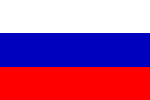

record company information and translations by Alex Dekhtyar
with contributions from Ingo Brode, Mr. Floyd of Indiana, Tor Martin Kristiansen & Alexander Zheleznov
© copyright Vernon Fitch / The Pink Floyd Archives
Any comments, corrections or additions to this discography are appreciated.
 AnTrop was named after the legendary Russian underground producer and sound engineer, Andrey Tropillo, who in 1990, on the wave of "perestroika," became the head of the St. Petersburg branch of Melodia. Since there was much turmoil in Russia at the time, he made the St. Petersburg branch independent of central headquarters and started releasing a series of classic Rock albums. These releases were not legitimate. They started with releases by The Beatles, Jesus Christ - Superstar, Rolling Stones, Led Zeppelin, and eventually Pink Floyd. All these records were released using Melodia facilities, but AnTrop was operating as an independent record label and was putting the Antrop logo and their own numbers and copyrights on the covers. However, since all the records were printed in Melodia owned and run facilities, AnTrop had to give its releases additional Melodia catalog numbers, which is why there are two catalog numbers on the releases. Antrop is the label that released most of the Pink Floyd albums in Russia. "P" in the AnTrop catalog numbers stands for Russian letter "P" (that looks like Greek "Pi"). AnTrop records were all pressed in Aprelevka.
AnTrop was named after the legendary Russian underground producer and sound engineer, Andrey Tropillo, who in 1990, on the wave of "perestroika," became the head of the St. Petersburg branch of Melodia. Since there was much turmoil in Russia at the time, he made the St. Petersburg branch independent of central headquarters and started releasing a series of classic Rock albums. These releases were not legitimate. They started with releases by The Beatles, Jesus Christ - Superstar, Rolling Stones, Led Zeppelin, and eventually Pink Floyd. All these records were released using Melodia facilities, but AnTrop was operating as an independent record label and was putting the Antrop logo and their own numbers and copyrights on the covers. However, since all the records were printed in Melodia owned and run facilities, AnTrop had to give its releases additional Melodia catalog numbers, which is why there are two catalog numbers on the releases. Antrop is the label that released most of the Pink Floyd albums in Russia. "P" in the AnTrop catalog numbers stands for Russian letter "P" (that looks like Greek "Pi"). AnTrop records were all pressed in Aprelevka. Krugozor Music Magazine used to be a monthly magazine that had 6 flexi records per issue. These flexi-discs contained various things, from interviews (not related to music) to folk songs, to occasional rock music. Three different Krugozor magazines over the years have had Pink Floyd flexi-discs included with the magazine.
Krugozor Music Magazine used to be a monthly magazine that had 6 flexi records per issue. These flexi-discs contained various things, from interviews (not related to music) to folk songs, to occasional rock music. Three different Krugozor magazines over the years have had Pink Floyd flexi-discs included with the magazine.
 Melodia used to be the only Soviet state-run record label until around 1989/90. The "A" in the catalog number (A60 00543) indicates that the LP was produced from digitally recorded master.
By dividing 544 by 2 (number of the sides) you can get the number of digitally recorded LPs released at that time. And the "C" indicates that it is an analog stereo (CTEPEO) recording.
Melodia used to be the only Soviet state-run record label until around 1989/90. The "A" in the catalog number (A60 00543) indicates that the LP was produced from digitally recorded master.
By dividing 544 by 2 (number of the sides) you can get the number of digitally recorded LPs released at that time. And the "C" indicates that it is an analog stereo (CTEPEO) recording. In the early 1990s, the Baltic Republics became independent states.
This resulted in the reorganization of many local branches of former Soviet Union state owned companies, including Melodia. Ritonis is the record label that replaced the Baltic branch of Melodia (based in Riga, Latvia). It started out by rereleasing a number of LPs previously released by Melodia. Most of their releases were sold to the Russian and local markets.
In the early 1990s, the Baltic Republics became independent states.
This resulted in the reorganization of many local branches of former Soviet Union state owned companies, including Melodia. Ritonis is the record label that replaced the Baltic branch of Melodia (based in Riga, Latvia). It started out by rereleasing a number of LPs previously released by Melodia. Most of their releases were sold to the Russian and local markets.
 Russian Disk is a reasonably small record label, that was relatively stable and reliable during early 1990s. It operates outside of Russia and usually releases licensed albums (it is really surprising that the release of Pink Floyd 1967-68 is not legitimate. The source indicated on the inside cover of the record are the collections of two Russian music fans).
Russian Disk is a reasonably small record label, that was relatively stable and reliable during early 1990s. It operates outside of Russia and usually releases licensed albums (it is really surprising that the release of Pink Floyd 1967-68 is not legitimate. The source indicated on the inside cover of the record are the collections of two Russian music fans).
 The Santa Records Ltd. logo found on the cover of The Wall is just another attempt by AnTrop to make its releases look legitimate. In fact, there is no Santa Records.
The Santa Records Ltd. logo found on the cover of The Wall is just another attempt by AnTrop to make its releases look legitimate. In fact, there is no Santa Records.
 SNC Records were one of the biggest Russian labels in the early 1990s. The name SNC stands for Stas Namin Center (Stas Namin is a Moscow producer/musician). This label specializes in Russian pop and Russian/Western hard-n-heavy. During the last few years, SNC Records had financial difficulties and are now most likely bankrupt and out of business.
SNC Records were one of the biggest Russian labels in the early 1990s. The name SNC stands for Stas Namin Center (Stas Namin is a Moscow producer/musician). This label specializes in Russian pop and Russian/Western hard-n-heavy. During the last few years, SNC Records had financial difficulties and are now most likely bankrupt and out of business.
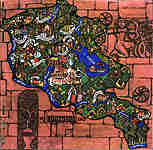
Title: Time / On the Run / Money flexi-disc
Matrix Number: 92-08219/1-
Release Date: October 1980
Release Information: This flexi-disc was released in an issue of the Soviet magazine Krugozor 10/80, ISSN 0130-2698. The magazine includes six blue flexi-discs, each of which are two sided. The Pink Floyd songs are flexi disc number 11, or side A of the sixth flexi-disc. All three songs are incomplete. The other flexi-discs contain Russian interviews and other music. The magazine also includes an article Pink Floyd-Dark Side of the Moon. (see translation of Krugozor article)
Description:
Cover: Red title cover.
Article: Page 9 article about Pink Floyd in Russian.
Flexi Disc: Blue flexi-disc.

Title: Another Brick in the Wall (Pt. 1) / The Trial flexi-disc
Matrix Number: 92-08807/2-1
Release Date: 1981
Release Information: This flexi-disc was released in an issue of the Soviet magazine Club And Amateur Art magazine (aka KLUB), issue #17-1981, ISSN 0130-2698. The magazine includes six red flexi-discs, each of which are two sided. The Pink Floyd songs are on the first side of the second flexi-disc, labelled as side 3. Both songs are incomplete. The other flexi-discs in the magazine are of Russian interviews and music.
Description:
Flexi Disc: Round red flexi-single.

Title: Shine On You Crazy Diamond / Us and Them flexi-disc with poster
Matrix Number: 92-13042/1-1
Release Date: September 1989
Release Information: A Pink Floyd flexi disc inserted in a poster. The poster has a Krugozor logo on it.
Description:
Poster: A 23 3/8 inch by 17 inch one-sided A3 folded poster. At the top is a die-cut pocket where the flexi-disc was inserted. When completely folded, it is the size of the flexi disc.
Insert: A 7 1/8 inch square one-sided insert with a caricature of the band on it. This insert was placed behind the flexi disc so that you could see it through the flexi disc.
Flexi Disc: Square blue flexi-single.
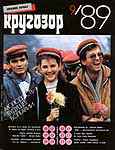
Title: Shine On You Crazy Diamond / Us and Them flexi-disc
Matrix Number: 92-13042/1-1
Release Date: September 1989
Release Information: This flexi-disc was released in an issue of the Soviet magazine Krugozor 9/89, ISSN 0130-2698. The magazine includes six blue flexi-discs, each of which are two sided. The Pink Floyd songs are flexi disc number 12, or side B of the sixth flexi-disc. Both songs are incomplete. Also included with the magazine was a Pink Floyd flexi disc in its own picture sleeve. The other side of the Pink Floyd flexi disc (side #11) is sung by Vilen "Willi" Tokarev on the songs "Man And Dog" & White Birch." The other flexi-discs in the magazine are of Russian interviews and music. The magazine also includes an article about Pink Floyd live in Moscow 1989 and three color pictures.
Description:
Picture Sleeve: [front] [back] Black and white caricature picture sleeve. 7 3/8" x 7 3/8". Flexi is inserted from the right side.
Flexi Disc: Round blue flexi-single.
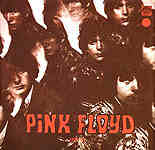
Title: Pink Floyd 1967-68
Record Company: RD Russian Disk Records
Catalog Numbers: R60 00511/12 (Piper) / R60 00513/14 (ASOS)
Matrix Information: (side 1 / side 2 / side 3 / side 4)
1) R60 00511/1-1 1 / R60 00512/1-1 2 / R60 00513/1-1 3 / R60 00514/1-2 4 (all four stamped)
Release Date: 1992
Release Information: This album is a release of the first two U.K. Pink Floyd albums, The Piper At The Gates of Dawn and A Saucerful of Secrets. This release was not authorized.
Description: Double LP with a gatefold cover.
Front Cover: Piper picture in brown, with the words Pink Floyd 1967-68 in red across the bottom. In the upper right corner is the Russian Disk logo (a red square with part of the Kremlin wall in a black circle, "RD" in latin letters above the Kremlin wall, and "Russian Disk" across the wall).
Back Cover: The Syd sketch in gray on a red background, with a Pink Floyd discography down the right side. Underneath the discography, in Russian, is the text: "Album is prepared by the order and with cooperation of the Association of Philophonists Clubs (105483, Moscow, P.O. Box 29). Recordings from collections of A.Agaphonov (St.Petersburg) and O.Nikolaev (Kamensk-Uralsky)." At the very bottom, in Russian, is the text: "(c) MTPP Russian Disk, 1992" and "Tipography AZG, order 256, # of copies: 50000" (MTTP is an abbreviation for the type of company Russian Disk is, and AZG is an abbreviation for Aprelevskiy Zavod Gramplastinok, which refers to the Aprelevka Record Plant (Aprelevka is a small town near Moscow). The number of copies does not mean that only 50,000 copies of the record were made, just that this run had only 50,000 copies).
Inside Cover: Gray and is split into three panels. The left panel has Piper at the Gate of Dawn across the top, with listing for song titles, band members and "Archive recordings 1967" in Russian at the bottom. The center panel is pictures of the band members from 1967. The right panel has A Saucerful of Secrets across the top, with listing for song titles, band members and "Archive recordings 1968" in Russian at the bottom.
Spine: STEREO R60 00511 PINK FLOYD 1967 - 68 (2LP)
Labels: Red Russian Disc labels with the title, DMM Direct Metal Mastering logo, the Russian Disk logo, and the catalog numbers in the middle.
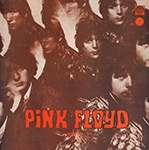
Title: Pink Floyd 1967-68, No. 1
Record Company: RD Russian Disk
Catalog Numbers: R60 00511 / 12
Matrix Information: (side 1 / side 2)
1) R60 00511/1-1 1 / R60 00512/1-1 2 (both stamped)
Release Date: 1992
Release Information: This album is a single LP release of the first disk of the Russian Pink Floyd 1967-68 double album. This release was not authorized.
Description:
Front Cover: Piper picture in brown, with the words Pink Floyd 1967-68 in red across the bottom. In the upper right corner is the Russian Disk logo (a red square with part of the Kremlin wall in a black circle, "RD" in latin letters above the Kremlin wall, and "Russian Disk" across the wall). Underneath the Russian Disk logo is a red circle with a "1" in it.
Back Cover: The back cover is grey with song titles and credits.
Spine: STEREO R60 00511-2 PINK FLOYD
Labels #1: Red Russian Disc labels with the title, DMM Direct Metal Mastering logo, the Russian Disk logo, and the catalog numbers in the middle.
Labels #2: White Russian Disc labels.
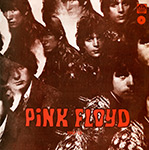
Title: Pink Floyd 1967-68, No. 2 LP
Record Company: RD Russian Disk
Catalog Numbers: R60 00513 / 14
Matrix Information: (side 1 / side 2)
1) R60 00513/1-1 3 / R60 00514/1-1 4 (both stamped)
Release Date: 1992
Release Information: This album is a single LP release of the second disk of the Russian Pink Floyd 1967-68 double album. This release was not authorized.
Description: The cover of this release is identical to the left half of the double album, Pink Floyd 1967-68 (which means that on the back cover of this release are the credits for the Piper at the Gates of Dawn album).
Front Cover: Piper picture in brown, with the words Pink Floyd 1967-68 in red across the bottom. In the upper right corner is the Russian Disk logo (a red square with part of the Kremlin wall in a black circle, "RD" in latin letters above the Kremlin wall, and "Russian Disk" across the wall). Underneath the Russian Disk logo is a red circle with a "2" in it.
Back Cover: The back cover is grey. On the left half, at the top are the words "The Piper at the Gates of Dawn." Underneath this is a listing for song titles (the songs from the Piper at the Gates of Dawn album are listed), band members and "Archive recordings 1967" in Russian at the bottom. The right half of the back cover has pictures of Syd Barrett and Nick Mason. Stamped in red at the top is "STEREO R60 00513."
Spine: STEREO R60 00513-4 PINK FLOYD, A SAUCERFUL OF SECRETS
Insert: Two-page fold-open Ritonis insert.
Labels #1: Red Russian Disc labels the title, DMM Direct Metal Mastering logo, the Russian Disk logo, and the catalog numbers in the middle.
Labels #2: White Russian Disc labels.
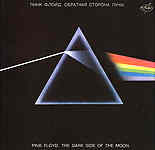
Title: The Dark Side Of The Moon
Record Company: AnTrop
Catalog Number: "P"91 00093/94, C90 32309/10 (The second number is a Melodia catalog number)
Matrix Information: (side 1 / side 2)
1) C90-32309/1-1 H / C90-32310/1-1 H (both stamped)
Release Date: 1992
Release Information: This album was produced by the Center of rock'n'roll congregations of united Evangelist-Lutheran churches of Russia, St. Petersburg. This release was not official. It does not include the phrase "There is no Dark Side of the Moon ... " at the end of the record.
Vinyl Weight: 120 grams
Description: Non-gatefold cover.
Front Cover: Black with prism and the words Pink Floyd Dark Side of the Moon in Russian across the top, and in English across the bottom. In the top right corner is the AnTrop logo.
Back Cover: Small prism in the middle. In the bottom left corner is the AnTrop logo. Across the bottom, in Russian: "(c) Producer center of rock'n'roll congregations of Evangelist-Lutheran Church of Russia SPb., 1992." From top to bottom across the middle are song titles (in both Russian and English), timings and the musicians (in Russian). (With the song titles, the timings for Speak To Me and Breathe are combined, as are Time and Breathe(reprise) with Breathe(reprise) not listed at all). Some of the translations are inaccurate. For example, "Us And Them" is "To Us and To Them," "Any Colour You Like" is " The Colour You Like," and "Brain Damage" is an adjective that means "Crazy."
Spine: Title. Catalog number.
Insert: [Front] [2] [3] [4] [5] [6] [7] [8] [9] [10] [11] [12] [13] [14] [15] [16] The first 10,000 copies included a 16-page black & white booklet that featured a history of Pink Floyd in Russian, along with numerous black and white pictures some of which were taken from the inside cover of A Nice Pair.
Labels #1: Red Antrop labels with blue circles.
Labels #2: White Antrop labels with purple circles.
Labels #3: White Antrop labels with blue circles. The label is a shooting target with numbers: 7 8 9 9 8 7 across the middle. At the top is an oval that has the AnTrop logo in the middle and "CONSUMMARUM IN UNIUM" and "St Petersburg" in gothic font across top and bottom respectively. The left side of the oval has "A"(Greek alpha) and the right side of the oval has the Greek "Omega." The bottom half of the label has "Stereo 33" and the Catalog Number "P91 00093/94." Below the middle hole there are the song titles and " "Recorded from broadcast" (all in Russian).
Labels #4: White Antrop labels with red text and flags at top. Two catalog numbers to the right of the spindle hole.
Labels #5: White Antrop labels with red text and flags at top. One catalog number to the right of the spindle hole.
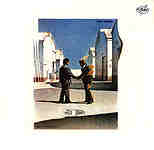
Title: Wish You Were Here
Record Company: AnTrop
Catalog Number: "P" 91 00213/14, 32395/96 (The first number is a Melodia Catalog Number) ("P" is a Cyrillic "P" that graphically looks like a "n")
Matrix Information: (side 1 / side 2)
1) C90-32395/3-1 H / C90-32396/3-1 H (both stamped)
Release Date: 1991
Release Information: Original issue with 1991 on the back cover. This album was produced by the Center of rock'n'roll congregations of united Evangelist-Lutheran churches of Russia, St. Petersburg.
Description: Non-gatefold cover.
Front Cover: The burning man picture with the man leaning forward. The number on the studio building to the right of the burning men is 19 (on releases from other countries it is 20), and the drain in front of the burning men is round (it is square on releases from other countries). The top right corner of the picture has "Pink Floyd" written in Russian, the bottom left corner of the picture has "Wish You Were Here" in Russian. The top right corner of the cover has the "AnTrop" logo. Issued in both matte and laminated covers.
Back Cover: The picture of the trees with the red veil. Along the right edge of the cover, in Russian, is the text: "(c) Producer Center of rock'n'roll congregations of United Evangelist-Lutheran church of Russia, SPb, 1991."
Spine: Title. Catalog number.
Insert: Two-page fold-open Ritonis insert.
Labels #1: Red Antrop labels with blue circles. The label is a shooting target with numbers: 7 8 9 9 8 7 across the middle. At the top is an oval that has the AnTrop logo in the middle and "CONSUMMARUM IN UNIUM" and "St Petersburg" in gothic font across top and bottom respectively. The left side of the oval has "A"(Greek alpha) and the right side of the oval has the Greek "Omega." The bottom half of the label has "Stereo 33" and the Catalog Number "P91 00213/4." Underneath the first Catalog Number is a second Catalog Number "32395/6." Below the middle hole there is "Pink Floyd," the song titles and " "Recorded from broadcast" (all in Russian). (For some reason, AnTrop translated the song titles into Russian on their early releases. Some of the translations were inaccurate. The reverse translation of "Shine on You Crazy Diamond" is " Shining of Your Crazy Diamond." Also, Shine On You Crazy Diamond is listed as (part I) and (part II). Other translations of song titles are accurate). St. Petersburg pressing.
Labels #2: White Antrop labels with purple circles. 1991 St. Petersburg pressing.

Title: Wish You Were Here
Record Company: AnTrop
Catalog Number: "P" 91 00213/14, 32395/96 (The first number is a Melodia Catalog Number) ("P" is a Cyrillic "P" that graphically looks like a "n")
Matrix Information: (side 1 / side 2)
1) C90-32395/3-1 H / C90-32396/3-1 H (both stamped)
Release Date: 1992
Release Information: Original issue with 1992 on the back cover. This album was produced by the Center of rock'n'roll congregations of united Evangelist-Lutheran churches of Russia, St. Petersburg.
Description: Non-gatefold cover.
Front Cover: The burning man picture with the man leaning forward. The number on the studio building to the right of the burning men is 19 (on releases from other countries it is 20), and the drain in front of the burning men is round (it is square on releases from other countries). The top right corner of the picture has "Pink Floyd" written in Russian, the bottom left corner of the picture has "Wish You Were Here" in Russian. The top right corner of the cover has the "AnTrop" logo. Issued in both matte and laminated covers.
Back Cover: The picture of the trees with the red veil. Along the right edge of the cover, in Russian, is the text: "(c) Producer Center of rock'n'roll congregations of United Evangelist-Lutheran church of Russia, SPb, 1992."
Spine: Title. Catalog number.
Labels #1: White Antrop labels with blue circles. St. Petersburg pressing.
Labels #2: White Antrop labels with red text and flags at top.
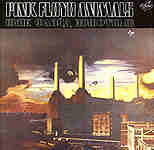
Title: Animals
Record Company: AnTrop
Catalog Number: "P"9100213/4, ATR 30057/58 ("P" is a Cyrillic "P" that graphically looks like a "n")
Matrix Information: (side 1 / side 2)
1) ATR 30057 / ATR 30058 (side 1 written / side 2 stamped)
Release Date: 1993
Release Information: This album was produced by the Center of rock'n'roll congregations of united Evangelist-Lutheran churches of Russia, St. Petersburg.
Description: Non-gatefold cover.
Front Cover: Black band across the top with the words Pink Floyd Animals (in English and in Russian underneath). In the top right corner is the AnTrop logo. Under the black band is the picture of Battersea Power Station with the flying pig.
Back Cover: Black band across the top with Pink Floyd Animals and song titles on the left in English and on the right in Russian ("Pigs On The Wing" is translated to "Flying Pigs"). Underneath is the picture of Battersea Power Station with the flying pig. Underneath is a narrow black band with the AnTrop logo in the lower left corner, and the words (in Russian) "CTEPEO P91 - 00213-4, (c) Producer Center of Mission of Evangelist-Lutheran congregations of Russia, SPb 1993."
Spine: Title. Catalog number.
Labels: White Antrop labels with blue circles. Includes two catalog numbers (second set of catalog numbers are "ATR 30057/8"). The songs are listed in English and "Pink Floyd Animals" is written in Animals font. (The official catalog numbers for WYWH and Animals both are "P91 00213/14")

Title: The Wall
Record Company: AnTrop, Santa Records, Ltd., St. Petersburg
Catalog Number: "P" 93 00567/68/69/70, ATR 30139/40/41/42 ("P" is a Cyrillic "P" that graphically looks like a "n")
Matrix Information: (side 1 / side 2 / side 3 / side 4)
1) ATR-30139 / ATR-30140 / ATR-30141 / ATR-30142 (all four written)
Release Date: 1993
Description: Gatefold cover.
Front Cover: White brick wall with the words Pink Floyd The Wall written in Scarfe script in black across it.
Back Cover: The white brick wall with the Santa Records Ltd. logo in a small oval at the bottom center.
Inside Cover: The Scarfe stadium drawing with credits in English. Band members names are listed.
Spine: Title. Catalog number.
Labels: White Wall brick labels, song listing in English, and the Russian text "CTEPEO" that means "Stereo" and "CTOPOHA, " the Russian equivalent of the word Side.
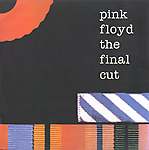
Title: The Final Cut
Record Company: None.
Catalog Number: "P" 94 RAT 30737 ("P" is a Cyrillic "P" that graphically looks like a "n")
Matrix Information: (side 1 / side 2)
1) RAT 30737/1 / RAT 30737/2 (both stamped)
Release Date: 1994
Release Information: There is no Record Company information to be found on the cover or label, which suggests that it may have been a pirated release, or that it was a Middle Asia release (such as Uzbekistan, which were responsible for previously released Abbey Road, and some other Western Rock albums in the same format). At the time of it's release, vinyl releases were not that common (Bulgarian CDs and Polish audio tapes provided alternatives to Russian vinyl LPs at that time). Side 1 ends with "Get Your Filthy Hands Off My Desert" and Side 2 starts with "The Fletcher Memorial Home," possibly because the source for this pressing was a CD.
Description: Non-gatefold cover.
Front Cover: Black with military stripes and title. Soft paper sleeve.
Back Cover: Song listing. Credits.
Spine: Title. Catalog number.
Labels #1: Red zig zag labels with title and song titles in English.
Labels #2: White zig zag labels with title and song titles in English.
Labels #3: Red labels with title and song titles in English.
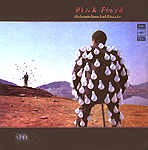
Title: Delicate Sound of Thunder
Record Company: Melodia, under license of EMI Records
Catalog Numbers: A60 00543 007, 00543/4/5/6
Matrix Information: (side 1 / side 2 / side 3 / side 4)
1) A60-00543/1-1 1 DMM / A60-00544/1-1 2 DMM / A60-00545/1-2 3 DMM / A60-00546/1-1 4 DMM (all four stamped) [L1, IC1]
2) A60-00543/1-2 1 DMM / A60-00544/1-3 2 DMM / A60-00545/1-2 3 DMM / A60-00546/1-1 4 DMM (all four stamped) [L2, IC1]
Release Date: 1989
Release Information: Original issue on Melodia Records. Double album. Matte cover.
Description: Gatefold cover.
Front Cover: The lightbulb man picture with Pink Floyd Delicate Sound of Thunder in English at the top and the EMI, Melodia and Digital master logos in the top right corner. Matte.
Back Cover: Black with the tree picture in the center and the song titles in English at the top and bottom. In the top middle is a white rectangular Melodia logo with CTEPEO A60 00543 007 (2 records) written underneath it.
Inside Cover #1: Live photos in white on blue with song titles, musicians and a commentary in Russian (see translation of liner notes).
In the bottom right corner, in English, is the text: "Manufactured under license of EMI Records (UK)," and in Russian: "Recordings of 1988, Aprelevka order of Lenin record factory 1989 Order # 489 Circulation 150 000 copies 2 x ART. 15-6. Price: 8 roubles." ART is "artikul" which is a special product code that was assigned to each type of things produced in the Soviet Union. Digitally mastered LPs had "Artikul" 15-6. The price listed is in old roubles. The official exchange rate was $1 = 0.6 rouble, non-official, $1 = 4 - 10 roubles).
Inside Cover #2: Live photos in white on blue with song titles, musicians and a commentary in Russian (see translation of liner notes).
In the bottom right corner, in English, is the text: "Manufactured under license of EMI Records (UK)," and in Russian: "Recordings of 1988, Leningrad record factory, 16.10.89, type of factory Z 1973-0-110670, ART 15-6 Price: 8 roubles." (16.10.89 is the date of the pressing of the initial run. ART is "artikul" which is a special product code that was assigned to each type of things produced in the Soviet Union. Digitally mastered LPs had "Artikul" 15-6. The price listed is in old roubles.
Spine: Title. Catalog number.
Labels #1: Red Melodia labels with the skyline of of Peter & Pavel castle on disc 1. White Melodia labels on disc 2. Pressed in St. Petersburg.
Labels #2: White Melodia labels with no skyline, and black text. A60 number to the right of the center hole. Pressed in Aprelevka near Moscow.

Title: Delicate Sound of Thunder
Record Company: Melodia, under license of EMI Records
Catalog Numbers: A60 00543 007, 00543/4/5/6
Matrix Information: (side 1 / side 2 / side 3 / side 4)
1) A60-00543/1-2 1 DMM / A60-00544/1-4 2 DMM / A60-00545/1-3 3 DMM / A60-00546/1-3 4 DMM (all four stamped) [L1, IC1]
2) A60-00543/1-5 1 DMM / A60-00544/1-5 2 DMM / A60-00545/1-4 3 DMM / A60-00546/1-2 4 DMM (all four stamped) [L2, IC2]
3) A60-00543/1-7 1 DMM / A60-00544/1-7 2 DMM / A60-00545/1-7 3 DMM / A60-00546/1-2 4 DMM (all four stamped) [L3]
Release Date: 1990
Release Information: Second issue on Melodia Records. Double album.
Description: Gatefold cover.
Front Cover: The lightbulb man picture with Pink Floyd Delicate Sound of Thunder in English at the top and the EMI, Melodia and Digital master logos in the top right corner. Laminated or Matte.
Back Cover: Black with the tree picture in the center and the song titles in English at the top and bottom. In the top middle is a white rectangular Melodia logo with CTEPEO A60 00543 007 (2 records) written underneath it.
Inside Cover #1: Live photos in white on blue with song titles, musicians and a commentary in Russian (see translation of liner notes).
In the bottom right corner, in English, is the text: "Manufactured under license of EMI Records (UK)," and in Russian: "Recordings of 1988, Aprelevka order of Lenin record factory 2 x ART. 15-6. Price: 8 roubles."
Inside Cover #2: Live photos in white on blue with song titles, musicians and a commentary in Russian (see translation of liner notes).
In the bottom right corner, in English, is the text: "Manufactured under license of EMI Records (UK)," and in Russian: "Recordings of 1988, Aprelevka order of Lenin record factory 30.08.90 Thn 3.2260-o-40000 ART. 15-6. Price: 8 roubles."
Inside Cover #3: Live photos in white on blue with song titles, musicians and a commentary in Russian (see translation of liner notes).
In the bottom right corner, in English, is the text: "Manufactured under license of EMI Records (UK)," and in Russian: "Recordings of 1988, Aprelevka order of Lenin record factory 1990 2 x ART. 15-7. Price: 9 roubles."
Spine: Title. Catalog number.
Labels #1: Red Melodia labels with no skyline on disc 1. White Melodia labels with no skyline on disc 2. A60 number to the right of the center hole. ONPMA above Melodia.
Labels #2: Red Melodia labels with the skyline of Peter & Pavel castle. At the top is the text "Ministry of Culture of USSR, United record company, MELODIA, Leningrad factory." In the middle is the text "CTEPEO 33, Gr.3. 3-75, GOST 5289-88, A60-00543," followed by the song titles. At the bottom is the text "Manufactured under license of EMI records (UK), recorded in 1988 (digitally), YEAR OF RELEASE 1990." Pressed in St. Petersburg.
Labels #3: White Melodia labels with no skyline, and black text. A60 number to the right of the center hole. ONPMA above Melodia above center hole. Pressed in St. Petersburg.
Labels #4: White Melodia labels with no skyline, and black text. A60 number to the left of the center hole.

Title: Delicate Sound of Thunder, No. 1
Record Company: Melodia, under license of EMI Records.
Catalog Number: A60 00543 007, 00543/4
Matrix Information: (side 1 / side 2)
1) A60-00543/1-5 1 DMM / A60-00544/1-5 2 DMM (both stamped)
Pressing Information: Pressed by Melodia in Riga, Latvia, Soviet Republic.
Release Date: 1990
Release Information: First issue with a black back cover. This album is disk one of the double album, Delicate Sound of Thunder (double albums used to be separated this way by Melodia).
Description: Non-gatefold cover.
Front Cover: The lightbulb man picture with Pink Floyd Delicate Sound of Thunder in English at the top. There is a No. 1 next to the EMI/Melodia logo on the right.
Back Cover: Black background with commentary and the tree picture on the right with song titles in English above it.
Labels #1: Red Melodia labels with song titles and Melodia logo. There is a horizontal line across the top of the labels where the skyline used to be.
Labels #2: Red Melodia labels with song titles and Melodia logo.

Title: Delicate Sound of Thunder, No. 1
Record Company: Melodia, under license of EMI Records.
Catalog Number: A60 00543 007, 00543/4
Matrix Information: (side 1 / side 2)
1) A60-00543/1-7 1 DMM / A60-00544/1-7 2 DMM (both stamped)
Pressing Information: Pressed by Melodia in Riga, Latvia, Soviet Republic.
Release Information: Second issue with a white back cover. This album is disk one of the double album, Delicate Sound of Thunder (double albums used to be separated this way by Melodia).
Description: Non-gatefold cover.
Front Cover: The lightbulb man picture with Pink Floyd Delicate Sound of Thunder in English at the top. There is a No. 1 next to the EMI/Melodia logo on the right.
Back Cover: White background with commentary and the tree picture on the right with song titles in English above it.
Spine: Title. Catalog number.
Labels #1: Red Melodia labels with song titles and Melodia logo.
Labels #2: White Melodia labels with song titles and Melodia logo.
Labels #3: Black Melodia labels with song titles and Melodia logo.

Title: Delicate Sound of Thunder No. 2
Record Company: Melodia, under license of EMI Records.
Catalog Numbers: A60 00543 007, 00545/6
Pressing Information: Pressed by Melodia in Riga, Latvia, Soviet Republic.
Release Date: Summer/Fall 1990
Release Information: First issue with a black back cover. This album is disk two of the double album, Delicate Sound of Thunder (double albums used to be separated this way by Melodia).
Description: Non-gatefold cover.
Front Cover: The lightbulb man picture with Pink Floyd Delicate Sound of Thunder in English at the top. There is a No. 2 next to the EMI/Melodia logo on the right.
Back Cover: Black background with commentary and the tree picture on the right with song titles in English above it.
Labels #1: Red Melodia labels with song titles and Melodia logo. There is a horizontal line across the top of the labels where the skyline used to be.

Title: Delicate Sound of Thunder No. 2
Record Company: Melodia, under license of EMI Records.
Catalog Numbers: A60 00543 007, 00545/6
Matrix Information: (side 1 / side 2)
1) A60-00545/1-2 3 DMM / A60-00546/1-2 4 DMM (both stamped)
Pressing Information: Pressed by Melodia in Riga, Latvia, Soviet Republic.
Release Information: Second issue with a white back cover. This album is disk two of the double album, Delicate Sound of Thunder (double albums used to be separated this way by Melodia).
Description: Non-gatefold cover.
Front Cover: The lightbulb man picture with Pink Floyd Delicate Sound of Thunder in English at the top. There is a No. 2 next to the EMI/Melodia logo on the right.
Back Cover: White background with commentary and the tree picture on the right with song titles in English above it.
Labels #1: Red Melodia labels with song titles and Melodia logo.
Labels #2: White Melodia labels with song titles and Melodia logo.
Labels #3: Black Melodia labels with song titles and Melodia logo.

Title: Delicate Sound of Thunder
Record Company: Melodia, under license of EMI Records
Catalog Numbers: A60 00543 007, 00543/4/5/6
Matrix Information: (side 1 / side 2 / side 3 / side 4)
1) A60-00543/1-7 1 DMM / A60-00544/1-7 2 DMM / A60-00545/1-4 3 DMM / A60-00546/1-2 4 DMM (all four stamped)
Release Date: 1991
Release Information: Third issue on Melodia Records. Double album.
Description: Gatefold cover.
Front Cover: The lightbulb man picture with Pink Floyd Delicate Sound of Thunder in English at the top and the EMI, Melodia and Digital master logos in the top right corner. Laminated or Matte.
Back Cover: Black with the tree picture in the center and the song titles in English at the top and bottom. In the top middle is a white rectangular Melodia logo with CTEPEO A60 00543 007 (2 records) written underneath it.
Inside Cover: Live photos in white on blue with song titles, musicians and a commentary in Russian (see translation of liner notes).
In the bottom right corner, in English, is the text: "Manufactured under license of EMI Records (UK)," and in Russian: "Recordings of 1988," and a date of 12.04.91.
Spine: Title. Catalog number.
Labels: White Melodia labels with the skyline of Peter & Pavel castle on sides 1 and 2, and red Melodia labels with the skyline of Peter & Pavel castle on sides 3 and 4. A60 number to the right of the center hole. ONPMA above Melodia.

Title: The Division Bell
Catalog Number: "P" 94 ATR 30812 ("P" is a Cyrillic "P" that graphically looks like a "n")
Matrix Information: (side 1 / side 2 / side 3 / side 4)
1) RAT 30812 - 1 / RAT 30812 - 2 / RAT 30812 - 3 / RAT 30812 - 4 (all four stamped)
Release Date: Summer 1994 (released in Russia on LP shortly after it's initial release elsewhere).
Release Information: Double album. There is no Record Company information to be found on the cover or label, which suggests that it may have been a pirated release, or that it was a Middle Asia release (such as Uzbekistan, which were responsible for previously released Abbey Road, and some other Western Rock albums in the same format). At the time of it's release, vinyl releases were not that common (Bulgarian CDs and Polish audio tapes provided alternatives to Russian vinyl LPs at that time).
Songs:
Side 1: Cluster One, What Do You Want From Me, Poles Apart.
Sie 2: Marooned, A Great Day for Freedom, Wearing the Inside Out.
Side 3: Take It Back, Coming Back to Life.
Side 4: Keep Talking, Lost for Words, High Hopes.
Description: Non-gatefold cover.
Front Cover: Two faces facing each other. Soft paper sleeve.
Back Cover: A tree. Song titles in English and Russian at the top. Three band members listed with instruments in Russian.
Spine: Title. Catalog number.
Cover Sticker: Yellow sticker on back cover.
Labels: Red labels with black text. Song titles are written in English and Russian.
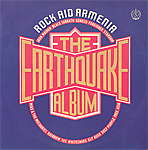
Title: Rock Aid Armenia - The Earthquake Album
Record Company: SNC Records
Catalog Number: C60 32479
Matrix Information: (side 1 / side 2)
1) C90-32479/1-1 / C90-32480/1-1 (both stamped)
Release Date: 1990
Release Information: This album was a benefit for the Earthquake in Armenia in 1988. It is a compilation album, with songs by Deep Purple, Genesis, ELP, and other rock bands. Deep Purple's "Smoke On The Water" was re-recorded with an all-star lineup that included David Gilmour on guitar.
Description:
Front Cover: Blue title cover with white SNC Records logo in upper right corner.
Back Cover: Song listing. Pictures of bands.
Spine: Title. Catalog number.
Labels: Red SNC Records labels.
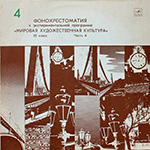
Title: Melodia sampler LP
Record Company: Melodia Records
Catalog Number: M70 49367 004
Release Date: 1990
Release Information: A sampler album that includes the Pink Floyd song, Welcome to the Machine.
Description:
Front Cover: Brown cover with title and pictures.
Back Cover: Song listing. Credits.
Labels: Blue Melodia labels.

Translation of Delicate Sound of Thunder liner notes
Three architecture majors from London, Roger Waters, Richard Wright and Nick Mason, performed together since the middle of the 1960s, but their group had neither a permanent lineup nor a permanent name. It is very likely that what they performed did not differ much from British rhythm 'n' blues, which was popularized by bands like the Rolling Stones or the Yardbirds. Bluesy name Pink Floyd (which is just the names of two black bluesmen, Pink Anderson and Floyd Counsel) was given to the band by the very member who inspired the quartet to perform radically different music - the music that made them popular. This was a student of one of London's Art Schools, Syd Barrett. Since February 1966 Pink Floyd performed with a regular lineup in the famous Marquee Club which made the Rolling Stones famous. Later they would perform in a new club, the UFO. From the very beginning, Pink Floyd became involved in experimenting with a synthesis of music and light, or as they were called at that time, psychedelic effects.
Early in 1967 Pink Floyd released their first single Arnold Layne. It would not get higher than 25th in the charts, but it became notorious because of the fact that a complicated, but rather usual for the 20th century, poetry metaphor had been interpreted by the radio DJs too close to the text. The same year a huge project called Games For May premiered, and a song from it, See Emily Play, made its way into top 10.
Even in these songs one can already trace the style of the band - electronic pulsation (which in 10 years will reach discos with the help of German bands Tangerine Dream and Kraftwerk), mysterious organ sounds, and puzzling lyrics influenced by Alice in the Wonderland like fairy tales and science fiction. With the release of their first LP, Piper At The Gates Of Dawn (this title Barrett took from a textbook poem "What do the Willows make noise about" by K. Graham) a theme of social criticism also appears. For example, the sarcastically vaudeville musical song, Corporal Clegg, about a soldier who returned from the war as a hero handicapped.
Musically, Pink Floyd developed in two directions, songs and "experimental-electronic." In the 2-LP Ummagumma, one record contains endless electronic meditations, while the other consists of already well-known songs recorded live throughout June 1969. Up until this record [Delicate Sound of Thunder], Ummagumma remained the only official Pink Floyd live release. The band was successful in producing a convincing synthesis of the two styles only in 1971 with its record Meddle. This is why various "best songs" compilations of the band usually include songs from this album.
At this time the band toured alot (especially successful was a show in Pompeii, filmed and released on video) and recorded music for a number of movies, including Zabriskie Point by outstanding Italian director M. Antonioni (1970).
In 1973 The Dark Side Of The Moon was released, a result of a great effort by the four Pink Floyd members (David Gilmour replaced Barrett in the band by that time), their sound engineer Alan Parsons, a specially invited group of vocalists (including Clare Torry), and a saxophone player, Dick Parry. This album equals such innovative classics of rock-music as Sgt. Pepper by the Beatles. Even more than that, The Dark Side Of The Moon became the first album in the history of rock that virtually had never left the charts since the very time it was released.
The Dark Side Of The Moon was followed by "We Want You to Be With Us" [Wish You Were Here] - a tribute to Syd Barrett who by that time had left show-business, Animals (1977) - social satire inspired by J. Orwell's Animal Farm, and The Wall - a musical filmed by Alan Parker. The key song from this album, Another Brick In The Wall, became the first and the only Pink Floyd single that reached the top of the charts in both Great Britain and the USA.
The Wall was being created during a period of constant internal arguments between the band members. At that time each of them tried, unsuccessfully, to launch a solo career. The Final Cut, recorded during this period (1983), had not been enthusiastically accepted by critics and listeners, and became the last work of the band in its classic lineup. Ironically, the title of the album can be translated as "The Last Recording."
But in 1987 three members of the band got together again for a tour while Roger Waters (who is, by the way, the author of a majority of the Pink Floyd songs) created his own band, "Radio KAOS." Gilmour, Wright and Mason, helped by a number of backup singers and musicians recorded the album A Momentary Lapse Of Reason and began to tour with it while Waters and his band toured concurrently in the same cities.
This album [Delicate Sound of Thunder] is a collection of "best songs" of Pink Floyd from the 1970s plus approximately one half of the A Momentary Lapse Of Reason album. Even though this album resulted in diverse responses from critics and the public, it still gives a rather complete image of one of the most influential bands in the history of contemporary popular music.

Translation of Krugozor 10/80 magazine article
The band Pink Floyd "Pink Flamingo" [throughout the article the words "Pink Floyd" appear in Russian, together with authors own translation of it as "Pink Flamingo"] was born, according to rumors, during a break between lectures. This happened in the spring of 1966, when three students of London's architecture polytechnical school used every opportunity to play together. These students were drummer Nick Mason, guitarist Roger Waters, and pianist Richard Wright. A friend of Roger's, Syd Barrett, was asked to write their first music. Maybe it was due to the viewpoint of the assistants of the architecture school that the musicians thought that the show should be illuminated, so they were the first in England who decided to accompany their performances with light effects, slide shows etc.
But the main difference with "Pink Flamingos" was, of course, their music, which was full of worrisome accents on one side but also fulfilling the audience with its floating, euphoric-like sound.
The musicians were looking for their own style, mainly in the direction of this spacey sound, and their first work in that direction was their first album, "Pipe at the dawn" [Piper at the Gates of Dawn], which contained the composition Astronomy Dominie. This song was a real science-fiction novel in music. The sound seemed to be unreal. It incorporated voices, a chorus with "star" pitch, bird yells and fantastic noises.
With arrival in 1968 of guitarist Dave Gilmour, the ensemble's lineup stabilized and the "Pink Floyd" musicians went into moviemaking. Since 1970, "Pink Flamingos" stood alongside the most well-known bands in the world, and they used vocals more and more often. It is interesting that every one of their compositions starts with a noise/instrumental foreword, which foreshadows the main theme of the song. The songs "Time" and "Money", published in "Krugozor" belong to this category. The latter song is intended as a pun on the power of money in the capitalist world. In other songs, "Pink Floyd" opposes, among other things, the world of robots and automata, and the machine-like approach to people.
A number of melodies of the band are often used as the soundscapes for big international sport events and competitions [rumor has it that one of Soviet news TV programs used a part of Pink Floyd's music as their theme song].
A. Zhil'tsov
On the eleventh musical page of the magazine, you can hear the songs "Shine of your diabolic diamond" [the actual song on the disc is On the Run], "Time" and "Money" performed by the group "Pink Floyd".

Translation of Krugozor 9 / 89 magazine article
Pink Floyd
Despite the general lack of publication in the Soviet press about rock-music, British supergroup Pink Floyd is lucky. Except for the Beatles, they are the most mentioned foreign group in the USSR.
It's creation dates back to 1966. The initial lineup was Nick Mason (drums), Roger Waters (bass, vocals), Richard Wright (keyboards, vocals), and Syd Barrett (guitar, vocals). From the very beginning, the band's music, bringing fantastic, and sometimes fantasmagoric images, would be performed with a light show. Such a mixture of video and audio was at that time a revolutionary innovation. During the 23 years that followed, the band continued to enhance its technical equipment. The most important stage of this was the introduction of the Azimuth Coordinator, a special piece of equipment that combined with a complex acoustic system to obtain a full-scale, volumized sound at any point in the concert hall.
Pink Floyd showed exclusive creativity in the field of studio recording as well, as shown on the band's very first album. It contained experiments with sound and noises, and special sound effect generators were used during its recording.
The band replaced Syd Barrett with David Gilmour and started to create "space," electronic rock. In albums recorded in the 1960s-70s we can find elements of choral, orchestra and movie music, pure experimental fragments of lyrics, electronic effects, bird singing, sounds of waves, buzz of insects, etc...
In 1973 The Dark Side Of The Moon was released. This masterpiece, a mixture of rock music and modern electronics, beat all popularity records. Two of their other records, Wish You Were Here and Animals, were also very successful. The release of double album The Wall, that told the story of suffering musician Pink in a world of nervous breakdowns, roughness, and senseless discommunication of people, brought the band back into the spotlight. The Wall, quoting Music Express magazine, represents "the symbol of anti-humanity of our society, its dominating reactionary forces. " Over a period of 5 years since its release, the album sold more than 30 million copies. The album's plot was made into a motion picture, and its scenic presentation became a super-show.
Starting with The Dark Side Of The Moon Roger Waters started to play a dominating part in the band. This lead to a conflict that happened right after the release of the band's next album, The Final Cut (1983). As a result of a court suit that tore the band apart, Waters left the band and started his own solo career. The Pink Floyd quartet became a trio and released the studio recording A Momentary Lapse of Reason, and the double live album Delicate Sound Of Thunder.
And now, their show in Moscow. We have never seen anything like it, and I am afraid that we will never see anything like it again, because, there is no other show in the world of rock music that could compare to this one. The most complicated laser and light equipment, controlled by computers, were drawing geometrical bodies of various forms and colors in the "Olimpiisky Concert Hall." Four freely floating above the scene constructions with powerful light generators reminded some of alien space ships, and laser cannons, moving on telescopic legs, reminded others of aliens. A bed, passing above the heads of spectators and exploding on the stage, and floating pig of cyclopic size, which became the symbol of the band after the release of Animals, was no less amazing than the gigantic circular screen on which video clips and computer animations were being projected. The drumsticks in the drummer's hands flashed ruby and emerald in the darkness while the pyrotechnics exploded and colored smoke floated in the air. Of course, these technical exotics would be worth next to nothing if it wasn't for the highest quality of performance, the careful thoughtfulness of arrangements and scenography, and the obsession to minor details of the music and effects.
The three hour show consisted of two sets. The first one featured songs from the latest studio album of the band, the title track Momentary Lapse of Reason [One Slip], Dogs of War, On The Turning Away [The exact Russian translation of On The Turning Away used in the article is "When I turn away"]. The second set featured classical cuts Money, Us And Them, Time, Another Brick in the Wall, Welcome to the Machine, etc. Unfortunately, the absence of Waters, in my opinion, somewhat weakened the sound of their 70s songs - at least it was different from what were are used to from the old recordings.
V. Fradkin
photos: A. Lidov
On the 12th sound page you can hear fragments of Shine on You Crazy Diamond and Us and Them performed by Pink Floyd.